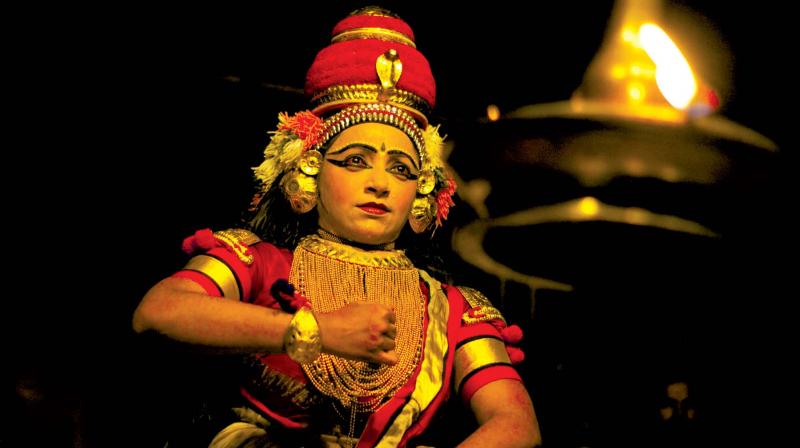Kutiyattam Kapers

An ancient tale of a princess coming to terms with her authentic self, this story resonates with your soul, even today. This physical translation of Tagore’s short play, Chitrangadacharitham will be a Nangiarkoothu performance by renowned artiste Kapila Venu. Nangiarkoothu is a solo narrative form performed by the female performers of Kutiyattam. In a candid chat with Bengaluru Chronicle, Kapila lets us in on her ardent world of art and the traditional artform of Kutiyattam.
The story that Kapila will narrate through her performance is one of a princess born to a royal lineage that is dependant on sons, so she is raised to be as good as a man. When the princess falls in love with the mighty warrior Arjuna, she realises that she isn’t woman enough for him. A boon granted to her by the God of Love gifts her a feminine body that makes Arjuna fall in love with her. As much as she is disturbed by the fact that Arjuna loves her for her femininity, he is also perturbed by not knowing who she really is. When the boon ends, Arjuna is much more pleased, and they are united in acceptance of each other. The musical accompaniment at this performance is an ancient pot drum called a mizhavu which is played spontaneously as the actor performs. “Kutiyattam can only be performed to live music as the music is not set. It is completely improvised as the musician follows every movement of the actor,” says Kapila
Her father Guru Venu is her mentor and they both trained under Guru Ammannur Madhava Chakyar whose family is renowned for practising the Kutiyattam form. “My father and I are both disciples of the legendary Guru Ammannur Madhava Chakyar. My father is an active trainer having choreographed several pieces in Kutiyattam. We have been a team since forever.”
Kapila belongs to a heritage that values art like life itself. Her initiation into the artform at the age of seven was a natural progression with both her parents being artistes, and she decided to venture professionally when she was 19. “When you’re exposed to art from such a young age, and it’s so much a part of your life, you don’t think of another alternative. I developed the tastes and sensibilities quite naturally. I’m fortunate to say that I have lived in a time to see my master performing, and learn from him. He came from a generation where the arts didn’t promise anything and it was his way of life.”
Chitrangadacharitham is an innovative experiment in comparison to traditional Kutiyattam. Kapila adds, “I think it’s very beautiful when gender is fluid and I appreciate the fact that the story ends in that way. In Kutiyattam’s repertoire, this is an innovation as most of the women that appear in a Sanskrit drama are quite stereotypical. This was an experiment on our part. I wouldn’t say it does complete justice to the text. You can’t read the play without shedding a few tears. It would be great if people would read the play once.”

